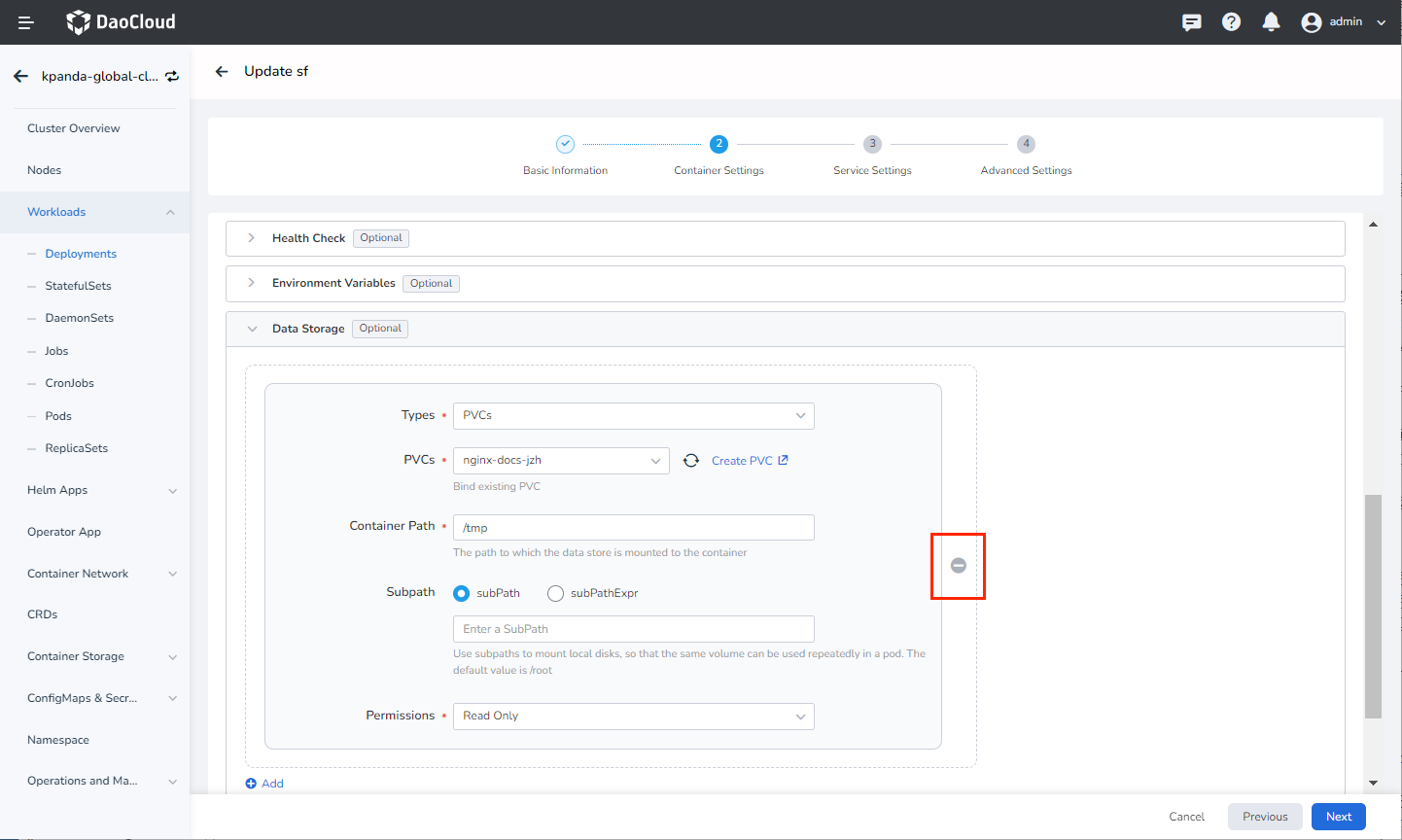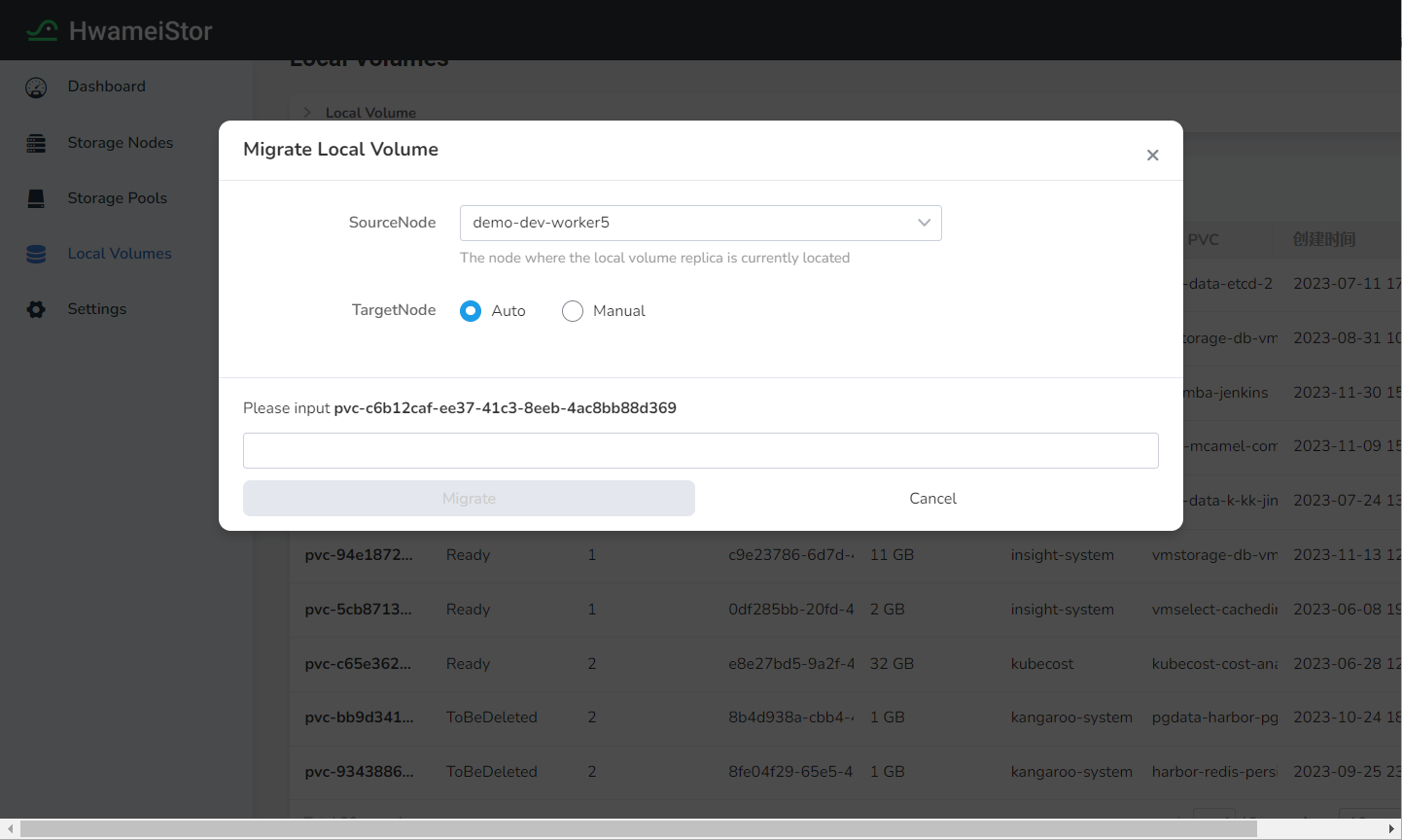Volume Migration¶
Migrate is an important operation and maintenance management feature in HwameiStor. When the copy of the node where the data volume bound to the application is located is damaged, the copy of the volume can be migrated to other nodes, and the application will be rescheduled after successfully migrating to the new node, and bound the data volume.
Basic concept¶
LocalVolumeGroup(LVG) (data volume group) management is an important feature in HwameiStor. When the application Pod applies for multiple data volumes PVC, in order to ensure the correct operation of the Pod, these data volumes must have certain attributes, such as: the number of copies of the data volume, and the node where the copies are located. It is a very important capability in HwameiStor to correctly manage these associated data volumes through the data volume group management function.
Prerequisites¶
LVG needs to be deployed in the Kubernetes system, and the deployment application needs to meet the following conditions:
- Support for lvm type volumes
- When the application Pod applies for multiple data volume PVC, the proper data volumes need to use the same configuration sc
- When migrating based on LocalVolume granularity, data volumes belonging to the same LocalVolumeGroup will not be migrated together by default (if they are migrated together, you need to configure the switch MigrateAllVols: true)
Steps on UI¶
-
Create convertible
StorageClassInstall through the interface, please refer to How to Create StorageClass
-
Create multiple
PVCCreate multiple PVC through the interface, please refer to How to Create PVC
-
Deploy Pod with multiple volumes
Create applications through the interface, please refer to How to Create Workloads, and mount the two created PVCs.
-
Unbound Pod with multiple volumes
Before migration, please unbound PVC. You can unbound them by Editing Workloads.

-
Create migration task
Go to the proper cluster → Click the left Container Storage → Hwameistor Enter the Hwameistor interface, select the locally unbound volume, The proper PVCs are
pvc-test01andpvc-test02. Click ... and select Migrate, choose the SourceNode and TargetNode.- SourceNode: The node where the local volume replica is located.
- TargetNode: After specifying, the original replica will be migrated to the target node. If Auto is chosen, the local volume replica will be automatically scheduled to other nodes.
If two/multiple local volumes are bounded on the same application, the two volumes will automatically form a local volume group for migration.

-
Click the proper local volume to enter the details and check the migration status.
Oneline trial steps¶
-
Create convertible
StorageClass -
Create multiple
PVC -
Deploy the multi-volume Pod
-
Unbound the multi-volume Pod
-
Create the migration task
cat > ./migrate_lv.yaml <<- EOF apiVersion: hwameistor.io/v1alpha1 kind: LocalVolumeMigrate metadata: namespace: hwameistor name: <localVolumeMigrateName> spec: sourceNode: <sourceNodeName> targetNodesSuggested: - <targetNodesName1> - <targetNodesName2> volumeName: <volName> migrateAllVols: <true/false> EOF -
View migration status
apiVersion: v1 items: - apiVersion: hwameistor.io/v1alpha1 kind: LocalVolumeMigrate metadata: annotations: kubectl.kubernetes.io/last-applied-configuration: | {"apiVersion":"hwameistor.io/v1alpha1","kind":"LocalVolumeMigrate","metadata":{"annotations":{},"name":"localvolumemigrate-1","namespace":"hwameistor"},"spec":{"migrateAllVols":true,"sourceNodesNames":["dce-172-30-40-61"],"targetNodesNames":["172-30-45-223"],"volumeName":"pvc-1a0913ac-32b9-46fe-8258-39b4e3b696a4"}} creationTimestamp: "2022-07-07T12:34:31Z" generation: 1 name: localvolumemigrate-1 namespace: hwameistor resourceVersion: "12828637" uid: 78af7f1b-d701-4b03-84de-27fafca58764 spec: abort: false migrateAllVols: true sourceNodesNames: - dce-172-30-40-61 targetNodesNames: - 172-30-45-223 volumeName: pvc-1a0913ac-32b9-46fe-8258-39b4e3b696a4 status: replicaNumber: 1 state: InProgress kind: List metadata: resourceVersion: "" selfLink: "" -
View migration success status
NAME CAPACITY NODE STATE SYNCED DEVICE AGE pvc-1a0913ac-32b9-46fe-8258-39b4e3b696a4-9cdkkn 1073741824 172-30-45-223 Ready true /dev/LocalStorage_PoolHDD-HA/pvc-1a0913ac-32b9-46fe-8258-39b4e3b696a4 77s pvc-d9d3ae9f-64af-44de-baad-4c69b9e0744a-7ppmrx 1073741824 172-30-45-223 Ready true /dev/LocalStorage_PoolHDD-HA/pvc-d9d3ae9f-64af-44de-baad-4c69b9e0744a 77s -
After successful migration, rebound the data volume Pod